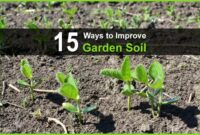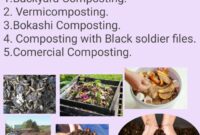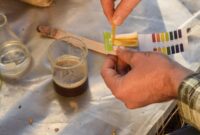Attract Bees – Creating a bee-friendly garden is a wonderful way to support local ecosystems and boost the health of your plants through natural pollination. Bees are essential pollinators that help flowers and crops thrive, and by planting specific flowering plants, you can attract more bees to your garden. This guide covers some of the best flowering plants that attract bees, tips for creating a pollinator-friendly space, and why supporting bees is so important.
Table of Contents
ToggleWhy Attract Bees to Your Garden?
Bees are crucial pollinators, responsible for pollinating around 75% of flowering plants and many food crops. By attracting bees to your garden, you help to support biodiversity and contribute to a healthy ecosystem. Pollination by bees improves flower production and fruit yield, making your garden more productive and vibrant. Moreover, bees and other pollinators play an important role in combating climate change by fostering resilient plant communities.
Best Flowering Plants for Attracting Bees
When selecting flowering plants for a bee-friendly garden, it’s essential to choose species that are rich in nectar and pollen. Here are some of the best options to attract bees throughout the seasons:
- Lavender (Lavandula spp.): Lavender’s purple flowers are not only beautiful but also rich in nectar, making it a top choice for bees. Plus, its fragrant aroma is a delight in any garden.
- Sunflowers (Helianthus annuus): These bright, sunny blooms are excellent for bees, offering both nectar and pollen. Sunflowers are easy to grow and make a striking addition to any space.
- Bee Balm (Monarda spp.): True to its name, bee balm is a favorite among pollinators. Its tubular flowers attract bees, butterflies, and hummingbirds, and it comes in a variety of colors, including red, pink, and purple.
- Coneflower (Echinacea purpurea): This hardy plant provides ample pollen for bees and is known for its long blooming period. Coneflowers add a lovely splash of color to the garden.
- Borage (Borago officinalis): With vibrant blue, star-shaped flowers, borage is highly attractive to bees. It’s also edible, with leaves and flowers that add flavor to salads and teas.
- Black-Eyed Susan (Rudbeckia hirta): These cheerful yellow flowers bloom from summer to fall, providing bees with food when many other plants have finished flowering.
- Salvia (Salvia spp.): Salvias come in a variety of colors and are highly attractive to bees due to their tubular flowers. They are drought-tolerant, making them ideal for hot climates.
Seasonal Flowering Guide
To keep your garden buzzing throughout the year, plant flowers that bloom in different seasons:
| Season | Suggested Flowers |
|---|---|
| Spring | Crocus, Dandelion, Willow, Hyacinth |
| Summer | Lavender, Sunflower, Bee Balm, Borage |
| Fall | Sedum, Goldenrod, Aster, Black-Eyed Susan |
By planting a variety of flowering plants, you can provide bees with a continuous food source from spring to fall, supporting them as they go about their important work.
Tips for Creating a Bee-Friendly Garden
Here are some essential tips to make your garden more welcoming to bees:
- Avoid Pesticides: Many pesticides are harmful to bees. If pest control is needed, choose organic or natural options, and apply them in the early morning or evening when bees are less active.
- Provide Water: Bees need water, especially during hot months. Place shallow dishes or bowls with fresh water in your garden, adding a few rocks or sticks for the bees to land on.
- Choose Native Plants: Native plants are typically the best option for attracting local bee species because they’ve co-evolved with them. Check your local plant nurseries for native flowering plants that are bee-friendly.
- Plant in Clusters: Bees are more attracted to groups of the same plant species. Try planting flowers in clusters or swathes to make it easier for bees to find and collect nectar and pollen.
- Create Nesting Habitats: Many bees nest in the ground or in hollow stems. Leave some bare soil patches and avoid excessive mulching, as ground-nesting bees may use these areas for shelter.
Common Challenges in Bee Gardening
While bee-friendly gardening is rewarding, it can come with a few challenges:
- Pests: Aphids and other insects can affect flowering plants. Encourage natural predators like ladybugs, or use insecticidal soaps instead of chemicals.
- Weather: Extreme weather can disrupt bees’ foraging. In dry conditions, make sure your plants are well-watered, and consider adding extra water sources for the bees.
- Allergies: Some people are allergic to bee stings. If you or a family member is allergic, keep the garden at a safe distance from areas where people gather frequently, and avoid plants that overly attract bees to close contact zones.
Benefits of Supporting Local Pollinators
Supporting local bee populations not only improves your garden’s productivity but also has far-reaching ecological benefits. When bees pollinate flowers and crops, they help create habitats for other wildlife and increase the genetic diversity of plants. Diverse plant communities can better withstand environmental changes, including droughts, temperature fluctuations, and disease.
By creating a bee-friendly garden, you’re helping to ensure that bees continue to thrive and pollinate the plants we rely on for food, medicine, and biodiversity. Plus, watching bees flit around your garden is a simple pleasure that connects you to nature.
Conclusion
Planting flowering plants that attract bees is a simple and impactful way to support pollinators while creating a beautiful, productive garden. By choosing bee-friendly flowers, providing water, and creating safe habitats, you can enjoy the benefits of increased pollination and contribute to the well-being of your local ecosystem.
For more tips on creating a bee-friendly garden, visit this bee conservation guide from the Xerces Society, an organization dedicated to protecting pollinators and other invertebrates.




